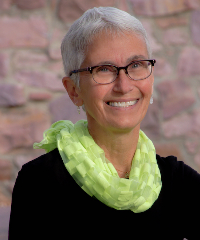Science Cafe Posts - Mission Mosquito
GLOBE Breadcrumb
- Home >
- Mission Mosquito >
- Science Cafe Posts
Banner and NavBar
Science Cafe Posts
Please complete your formal training to unlock the ability to create GLOBE Blogs.
See Training > User Roadmaps in the site navigation to learn more.Blogs
Entries with GLOBE Science Topics Earth as a System .

My mosquito trap was definitely a rollercoaster, and with this being the last required update, I still plan on seeing how the traps do after the internship finishes since this has been really interesting. To give some background, I set out three traps around 30-40 yards away from each other around my AOI so I could get an idea of how different areas may yield different results. The first trap...

My fieldwork to map land via the Globe app led me to understand where I live better. Texas is the second-largest U.S. state by both area and population. There are only four deserts in North America, and Texas is home to the Chihuahuan Desert. Texas Land Conservancy [TLC] works to conserve natural areas, protect the physical and ecological integrity of their wildlife habitat and native plant...

When you start writing your GLOBE report for IVSS, it might be difficult because you might not sure where to start. We tend to start writing the Methods section first because it is something you did it yourselves, and it should be relatively easy and straightforward to write. Second, you should write the Results section, do graphs, tables and texts (think of a best way to present your cool...

On May 1, 2021, I did a lot of things. Most of them involved staying home, logging in to Microsoft Teams for virtual school, and doing my homework. Little did I know that my life would change that very evening. I logged off from school and opened Outlook to check my email, and I saw it immediately: “Congratulations on your NASA virtual internship!” For the next five months, I was immersed in...

My experiment aims to test how two variables impact the likelihood of mosquitoes breeding. The first variable is the water type, and I am testing with tap water, filtered water, and muddy water from a local pond. The second variable is the food in which mosquitos will breed. Therefore, I will add rice water and sugarcane juice to the three water types. So, I will end up with nine...

In October, our SEES research team presented at the 2022 MIT Undergraduate Research Technology Conference (MIT URTC), becoming the first SEES team ever to be selected to present a paper at this competition. We wanted to share our experience with MIT URTC, from the starting point of our SEES research project to developing a publishable manuscript and presenting our paper at the conference. At...

I have 5 identical buckets placed in shady areas around my yard. Two of these buckets (Buckets 1 and 2) are filled with equivalent amounts of water, grasses, leaves, and dirt, while another bucket (Bucket 3) contains everything but the dirt. I wanted to examine how dirtier water could attribute to a more habitable microenvironment for mosquitoes. My two other buckets contain equivalent...

First Post: For my project, I wanted to see how CO2 emissions could affect mosquito activity. To do this, I set up 4 water bottle traps. 2 of the traps contained a solution of tap water (1 cup), sugar (1/4 cup), and yeast (1 gram). The yeast and the sugar react to release carbon dioxide. (Fermentation) The other two bottles contained a basic solution of tap water and grass. One bottle of...

For my experiment, I decided to see which fruits or foods in general that mosquitos would be attracted to. From left to right, it was the cantaloupe, watermelon, control(which is nothing), and a pineapple in the last one. I wanted to test whether different fruits or foods affected the amount of larvae and mosquitos that are born. For the first week of testing, I did not spot anything or any...

For my mosquito habitat experiment, I decided to approach it from the perspective of the size of containers. I had 5 different containers, each of which is a different size, from a small bottle to a soap bottle to the largest, a gallon jug. For the first week of testing, I was able to set up the traps in their selective locations, however, was not able to check them till week the end of week 2...





